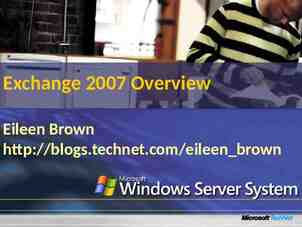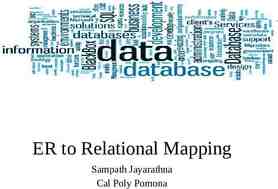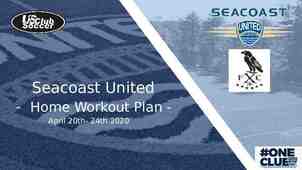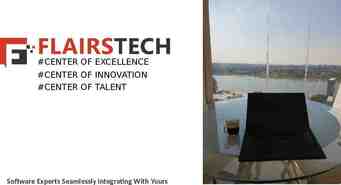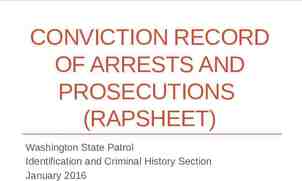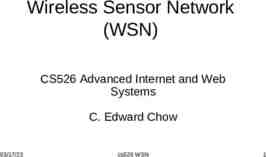Connecticut’s Shellfish Program Alissa Dragan
17 Slides8.96 MB

Connecticut’s Shellfish Program Alissa Dragan Supervising Environmental Analyst CT Department of Agriculture, Bureau of Aquaculture

DA/BA Staff: Administration: Shellfish Laboratory: Shellfish Sanitation Program: Vessel Operations: David Carey, Director Lori Scianna, Administrative Assistant Joseph DeCrescenzo, Dairy LEO, Fisheries Biologist 2 Emily Marquis, HAB Specialist, Fisheries Biologist 1 Shellfish Pathologist-Vacant Alissa Dragan, Growing Area Specialist, Supervising Environmental Analyst Jenifer Yeadon, Shellfish Sanitation Officer, EA 2 Shannon Kelly, Aquaculture Specialist, EA 2 Michal Zuber, GIS Specialist, EA 1 Rick Seidon, Research Vessel Engineer

The CT Shellfish Program operates as part of the National Shellfish Sanitation Program (NSSP) CT’s program falls under the jurisdiction of the CT Department of Agriculture, Bureau of Aquaculture NSSP is a cooperative program consisting of State, FDA, and Industry partners who agree to accept and meet

DABA NSSP-MO Responsibilities DOAG is the responsible Agency for ensuring the safety of molluscan shellfish for human consumption. DOAG Analysts oversee CT shellfish production from the growing areas through the distribution chain Growing Area Classification & Management (Closures & Openings) Regulate Shellfish Harvest, Processing, Sale, & Shipment Biannual Harvester, Processor, & Dealer Inspections & Illness Investigations Aquaculture Permitting, Includes Inland Fish Farming & Seaweed Laboratory: Seawater & Shellfish Bacteriological, Viral, & Vibrio Testing, HAB Monitoring

Sanitary Survey Written evaluation of all environmental factors, including actual and potential pollution sources, which have a bearing on the water quality in a shellfish growing area

Shoreline of every town with classified growing areas is walked, and every property within the designated survey area is visually inspected Individual properties are inspected for signs of failing septic systems, cross connections to stormwater system , and other potential sources of pollution Water pollution control facilities, industrial discharges, storm sewers, and pump stations are evaluated Marina surveys are performed to evaluate the potential for contamination by boats discharging waste

Sampling Requirements Conditionally Approved Open Samples Monthly water samples are required when the growing area is in the open status of its conditional classification If a monthly sample cannot be collected due to environmental constraints, the monthly sampling requirement will be satisfied if an additional water sampling run is conducted the following month Adverse Pollution Condition Samples(APC) A minimum of five (5) samples shall be collected annually under adverse pollution conditions from each sample station in the growing area A minimum of the most recent fifteen (15) samples collected under APC from each sample station shall be used to calculate the median or geometric mean and Reopening Samples The closure time period shall be at least fourteen (14) consecutive days when environmental conditions are suitable for shellfish feeding and cleansing unless shorter time periods are demonstrated to be adequate CT DABA policy: Minimum 7 day closure with reopening on the 8th day following the

Sample Tracking Sample Form: Town & Tax Code Collector(s) Date & Tide Stage (E, L) Station ID Time of Collection Area Sampled Area Status (O/C) APC Sample Run? Note anything unusual, large flock of birds, odors, discolored water, etc.

2021 Laboratory Processing: 5901 Samples Processed 5451 Seawater Samples Processed 174 Shellfish Tissue Samples Processed 11 MSC Samples Processed 244 Plankton Samples Processed 21 PSP Samples Processed

National Shellfish Sanitation Does my area meet Program Bacteriological Standards Approved criteria (AKA “pass”) under conditionally open conditions? Geometric Mean of membrane filtration (MF) colony forming units (CFU) shall not exceed 14 CFU/100 mL, AND not more than 10% of samples shall exceed an MF of 31 CFU/100mL To meet the Approved Criteria, it takes 8 million cubic feet of dilution water to dilute one person’s waste in one day 59,850,779 gallons Volume equal to 12 football fields covered in 10 feet of water

Why do we need to provide tissue samples? A growing area temporarily placed in the closed status , shall be returned to the open status only when: NSSP-MO Stipulates that the closure time period shall be at least fourteen (14) consecutive days when environmental conditions are suitable for shellfish feeding and cleansing unless shorter time periods are demonstrated to be adequate The emergency situation or condition has returned to normal and sufficient time has elapsed to allow the shellstock to reduce pathogens or poisonous or deleterious substances that may be present in the shellstock to acceptable levels. When pathogens are of concern, studies establishing sufficient elapsed time shall document the interval necessary for reduction of coliform levels in the shellstock to preclosure levels. Such coliform studies may establish criteria for reopening based on coliform levels in the water.

How can we upgrade our closure trigger? Sanitary Survey Sanitary Survey must be up to date APC Samples Target sampling to include rainfall amounts greater than your current closure trigger to determine impacts of various rainfall events Ideally on day 0-4, or Within the 7 day closure period

How can we upgrade our closure trigger? Other Considerations The dataset should adequately cover all seasons & rainfall amounts under which the area will be open

What else can you do for my Commission? Produce maps for your recreational permits and commercial shellfish lease sites Permit shellstock restocking activities: Recreational Relay license required to move shellstock from one area to another Reopening license may be required depending on source of relayed product Scientific/Resource Assessment license Shellfish pathology

Questions Alissa Dragan [email protected] 860-818-7034 https://portal.ct.gov/DOAG/Aquaculture1/Aquaculture/Aquaculture-Home-Page Aquaculture ct



